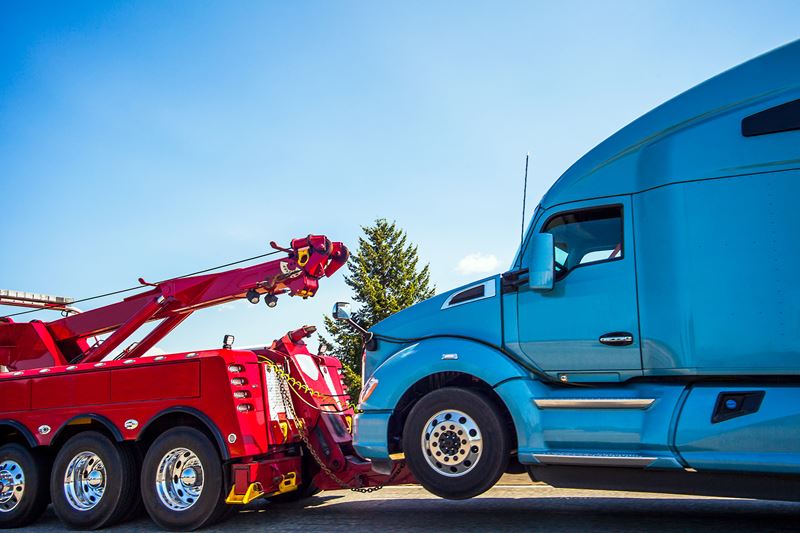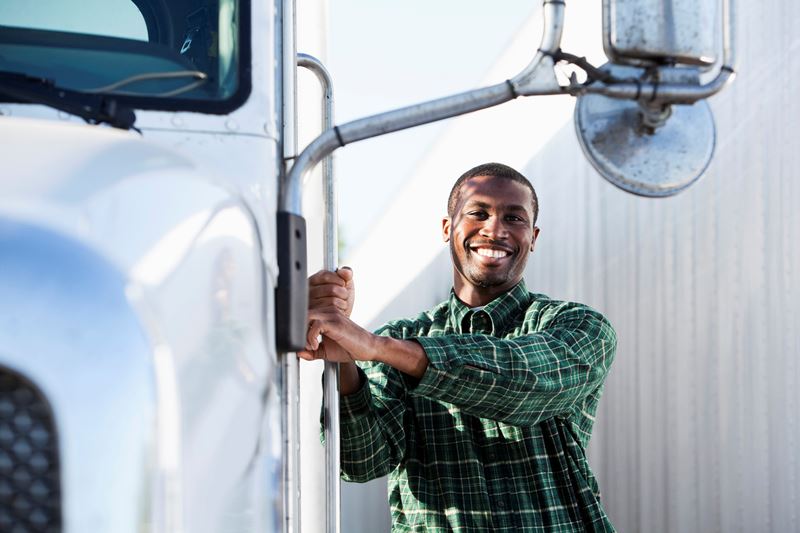What to do in case of a truck accident
What to do in case of a truck accident
Speeding, collisions, distracted driving, mechanical failure, cargo shifts, taking a curve or sharp bend in the road too quickly – these are just some of the common reasons for trucking accidents that take place on our roads every day. With over 300,0001 truck drivers in Canada, there are bound to be accidents.
Consider the following tips to help your fleet reduce the potential for accidents and respond appropriately if an accident does occur.
Prevention & Preparedness
Naturally, prevention is the best policy. To mitigate risks, driver training and safety technology play key roles. At a recent virtual panel discussion hosted by U.S.-based Federal Motor Carrier Safety Administration (FMCSA), Brett A Sant, SVP – Safety and Risk Management, Knight-Swift Transportation Holdings Inc. outlined four areas safe drivers will focus on when operating a commercial truck: managing vehicle speed for proper traffic and weather conditions; managing the space around the vehicle, such as following distance; avoiding distractions; and managing fatigue. 2
On the technology front, innovations have the potential to improve driver performance and vehicle safety. Among the latest technologies that are being touted to reduce accidents are: eyelid-monitoring devices, radar activated braking systems, electronic stability control, and telematics. 3
However, as everyone knows, accidents do happen. Being prepared and knowing what to do is so important before an accident occurs. Truck drivers need to check their vehicle for proper emergency equipment, including warning devices and fire extinguishers; be knowledgeable about their company’s accident reporting procedures; and be able to locate their insurance information.
What To Do On The Scene 4
Drivers should be trained on what steps to take after an accident occurs, starting with securing the scene. (Ability to carry out these steps will, of course, depend on any injuries sustained by the driver.) First, drivers should immediately shut down the engine, turn on four-way flashes, and notify the authorities, calling 911 and/or the police. To prevent further collisions, drivers should set out triangles in proper locations. Next, drivers should report the accident to their fleet manager or company at the earliest opportunity. Fleet operators must ensure their drivers know who to call at their company, how best to reach them, and if there is another contact number after hours.
It’s critical that fleet managers contact the company’s insurance broker as soon as possible. Your broker will work with your insurance company to make a claim as needed and help to ensure that any time-sensitive procedures are followed. That being said, it’s important that fleet managers, and to some extent drivers, are familiar with their insurance policy requirements so that they may be followed accordingly.
Proper documentation about an accident is vital for both insurance and legal purposes. Drivers should always have an accident reporting booklet with them and be familiar with what information is required. Accident reports typically include the names and contact information for each driver involved; a detailed description of the accident; weather conditions; names of witnesses; and any injuries and property damage. The report should be filled out as soon as is practical, in order to gather key information while it’s fresh in the driver’s mind.
Drivers should also be trained on correct photo documentation of the scene and property damage. They should take pictures of the general area of the accident, the vehicles or objects involved, both up close and at a distance; license plates of vehicles involved; and anything else that might be relevant. 5
What Not To Do On The Scene
What not to do on the scene of an accident is also important. Drivers should be instructed to not take photos of injured people, or post information or photos of the accident on social media. Drivers should not apologize or admit liability on the scene, or discuss the accident with anyone other than the police and their own company, insurance broker, authorized insurance representative, or claims adjuster. And even if an accident seems minor, reporting to the insurance broker should not be delayed.6
Timely reporting is critically important. Not only timely reporting from the driver to their company, but by the company to their insurance broker. This provides the insurer with the best opportunity to retrieve information in a timely manner to effectively manage the claim.
What To Do After An Accident
For fleet companies, the employee’s health and well-being will be a top priority. Not only should companies help drivers get the medical care they need, they can also connect them with disability or mental health support programs and services. If possible, employers can allow for modified duty to help drivers get back to work.
Going forward, companies can learn from accident experiences to prevent future collisions. In looking at data over time, companies may notice trends or patterns. If certain types of accidents seem to be recurring, they can take preventative action such as additional employee training or changing the way certain tasks are performed. 7
Accidents are never good news, but they can be made worse by a lack of preparedness. With the right preparation, training and knowledge, drivers will be equipped to both prevent and appropriately respond to accidents.
1 E. Mazareanu. Statistica. “Total number of Canadian truck drivers 2000-2018,” Aug 11, 2020
2 “Fleets talk safety initiatives that work,” FleetOwner, Aug. 7 2020
3 “Technology used for the prevention of trucking accidents,” TMCNet.com, Sept. 26 2019
4 “Post Accident Procedures for CMV Incidents,” EHS Daily Advisor, April 30, 2012
5 “What to do before and after an after and accident: fleet manager best practices,” Hub International, July 26, 2018
6 “5 things drivers should never do at the scene of an accident,” Trucking Info, Nov. 6 2013
7 “What do to after an accident,” FleetOwner, May 15 2018



